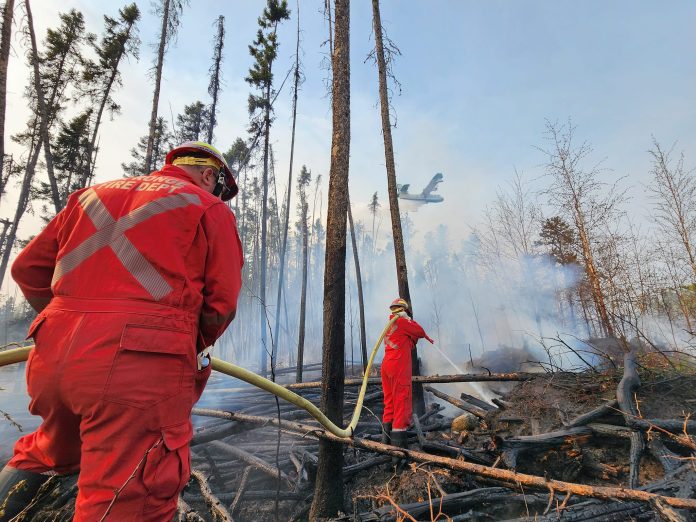
Wildfire smoke prompts partial evacuation in Fond du Lac
The Saskatchewan Public Safety Agency (SPSA) is warning the public to be cognizant of potential fire-sparking activities in the midst of a significant wildfire season.
Steve Roberts, vice-president of operations, said the majority of this year’s wildfires have been caused by human activity, not lightning. However, he said, human-caused fires typically dominate the numbers earlier in the year.
“The behaviour of the citizens of Saskatchewan make a big difference on our wildfire season and the amount of impact it will have,” he said.
“That’s why we are very concerned about people being proactive and taking prevention measures.”
Ahead of the long weekend, Roberts asked the public to keep an eye on campfires. It’s important to keep them contained and to extinguish them when you leave.
He also said ATVs and uncontrolled fireworks are common causes.
Roberts pointed to Fire Smart resources on the SPSA’s website for protecting your property from wildfires.
“Even though we have had scattered rain throughout the area, we could have areas that are dry and susceptible to fire starts,” he said.
The SPSA has recorded 371 wildfires so far this year. This is below the 10-year average of 415, but above the five-year average of 312.
The most it’s ever recorded in a year was 720 fires in 2015. That record-breaking year saw 1.7 million hectares burned, which is still well above this year’s 1.2 million hectares. However, the 10-year average is only 442,000 hectares burned.
Roberts attributes the higher number of land burned to wildfires in the spring, such as near Buffalo Narrows and La Ronge.
There’s currently 54 active wildfires in Saskatchewan.
Six of them are uncontained, including the Todos fire east of Fond du Lac. Smoke in the area has caused an evacuation of some at-risk community members to Saskatoon.
“As of the last 24 hours, we have started to receive rain on that fire, so that’s going to make a significant pertinence on the actions there,” said Roberts.
The fire, which has grown to 2,685 hectares, was first reported on Jul. 22. Fond du Lac’s emergency operations centre was activated on Jul. 26, according to an advisory.
Roberts said poor air quality in the Athabasca region is primarily from wildfires in Alberta and the Northwest Territories.
Leadership in Fond du Lac is encouraging residents to take advantage of a fresh air shelter at the band hall. Those at home are asked to stay indoors, keep windows and doors closed and reduce exercise.
The other “wildfire of note” is the Hamil fire west of Wollaston Lake. It was reported on Jul. 26, and was 4,800 hectares as of Tuesday.
Only three of the active wildfires are listed as contained. Thirty-four are being monitored to assess risk and crews are working to protect values, such as infrastructure, on 11 of the fires.

